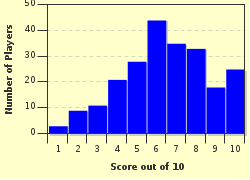Quiz Answer Key and Fun Facts
1. Some cars had signature design elements that everyone recognized. Here's one: a series of parallel chrome strips running along the top of the hood and curving over the front, crowned by an Indian head ornament. Models in the line included Chieftain, Star Chief and Catalina. What car is this?
2. This mid-price car had a signature design feature that by itself identified the make: a row of three or four holes along the side of the front fenders. Models included Roadmaster, Century, Invicta and Riviera. What car is this?
3. Though its post-war models were initially popular for their modern bullet-shaped design, this make faded away in the late 1950s after a merger that formed American Motors. Its models included: Commodore, Pacemaker, Hornet and Jet. What car is this?
4. This American-made car bucked the 1950s trend of bigger, longer and wider by continuing its line of pint-sized models of which its four-foot-wide station wagon was the most familiar. What car is this?
5. Most would probably agree that this two-door sub-compact was the cutest car on the market in the 1950s. Basically a two-seater, it came in just two models, a hardtop and a convertible. What car is it?
6. You would not have been able to purchase one of these cars in 1956 because there was no such model made. Which car did NOT exist in 1956?
7. The Ford Ranchero and Chevrolet El Camino were both unusual models in what way?
8. This luxury vehicle was the most expensive American production car during its two-year run in 1956-1957. Virtually hand made, it cost an astronomical $10,000, as much as a Rolls-Royce. What car is it?
9. The Batmobile featured in the 1966-1968 "Batman" television series actually began life in 1954 as a prototype concept car designed for which make?
10. This car's all-new 1951 design featured the kind of sleek, long and low profile that didn't become standard among its competitors from Detroit's Big Three until several years later. Up to its last year in 1955, its models included Manhattan, Virginian, Carolina and Dragon. What car is it?
Source: Author
PauFlP
This quiz was reviewed by FunTrivia editor
Bruyere before going online.
Any errors found in FunTrivia content are routinely corrected through our feedback system.

